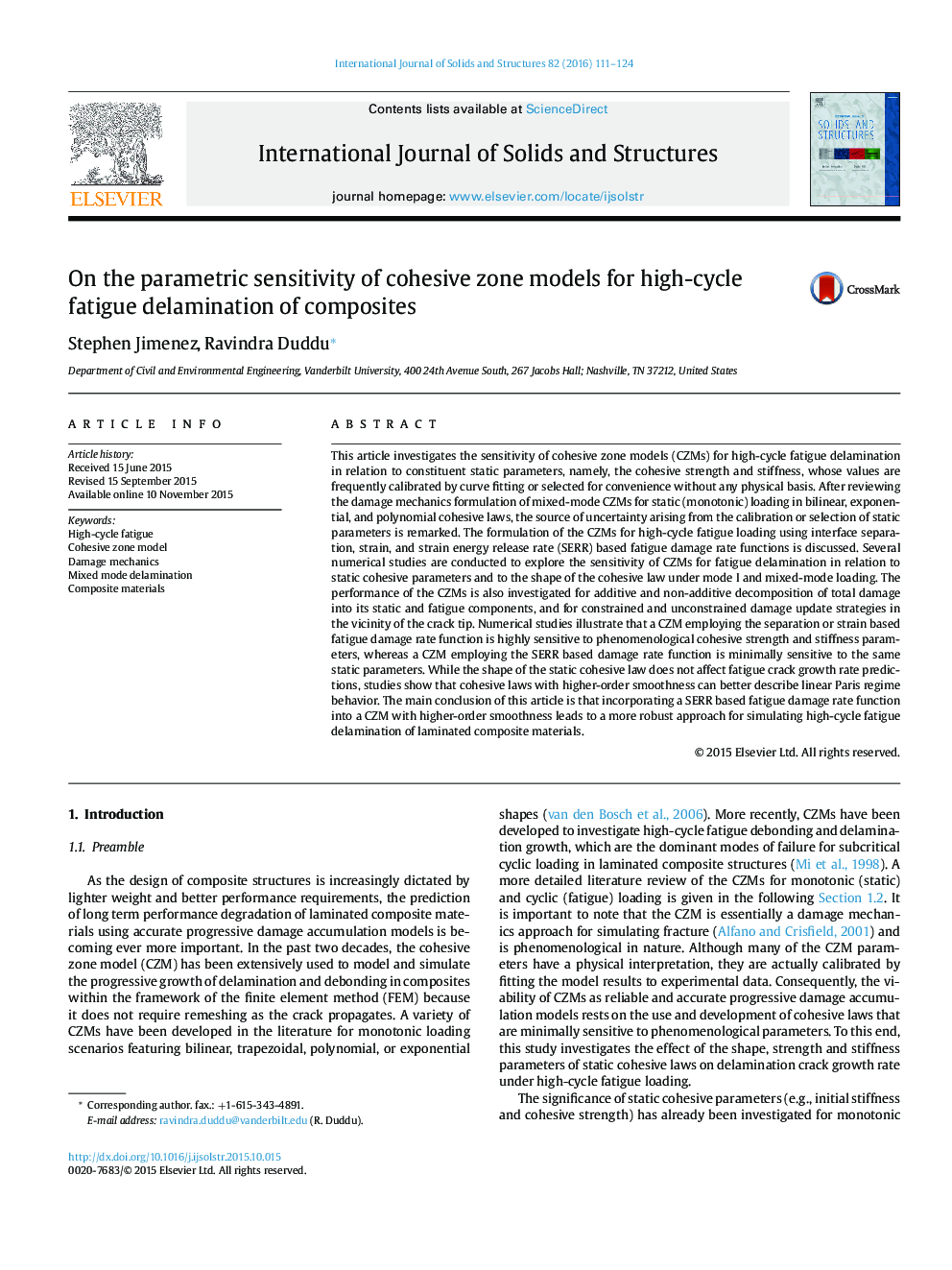| Article ID | Journal | Published Year | Pages | File Type |
|---|---|---|---|---|
| 277254 | International Journal of Solids and Structures | 2016 | 14 Pages |
This article investigates the sensitivity of cohesive zone models (CZMs) for high-cycle fatigue delamination in relation to constituent static parameters, namely, the cohesive strength and stiffness, whose values are frequently calibrated by curve fitting or selected for convenience without any physical basis. After reviewing the damage mechanics formulation of mixed-mode CZMs for static (monotonic) loading in bilinear, exponential, and polynomial cohesive laws, the source of uncertainty arising from the calibration or selection of static parameters is remarked. The formulation of the CZMs for high-cycle fatigue loading using interface separation, strain, and strain energy release rate (SERR) based fatigue damage rate functions is discussed. Several numerical studies are conducted to explore the sensitivity of CZMs for fatigue delamination in relation to static cohesive parameters and to the shape of the cohesive law under mode I and mixed-mode loading. The performance of the CZMs is also investigated for additive and non-additive decomposition of total damage into its static and fatigue components, and for constrained and unconstrained damage update strategies in the vicinity of the crack tip. Numerical studies illustrate that a CZM employing the separation or strain based fatigue damage rate function is highly sensitive to phenomenological cohesive strength and stiffness parameters, whereas a CZM employing the SERR based damage rate function is minimally sensitive to the same static parameters. While the shape of the static cohesive law does not affect fatigue crack growth rate predictions, studies show that cohesive laws with higher-order smoothness can better describe linear Paris regime behavior. The main conclusion of this article is that incorporating a SERR based fatigue damage rate function into a CZM with higher-order smoothness leads to a more robust approach for simulating high-cycle fatigue delamination of laminated composite materials.
